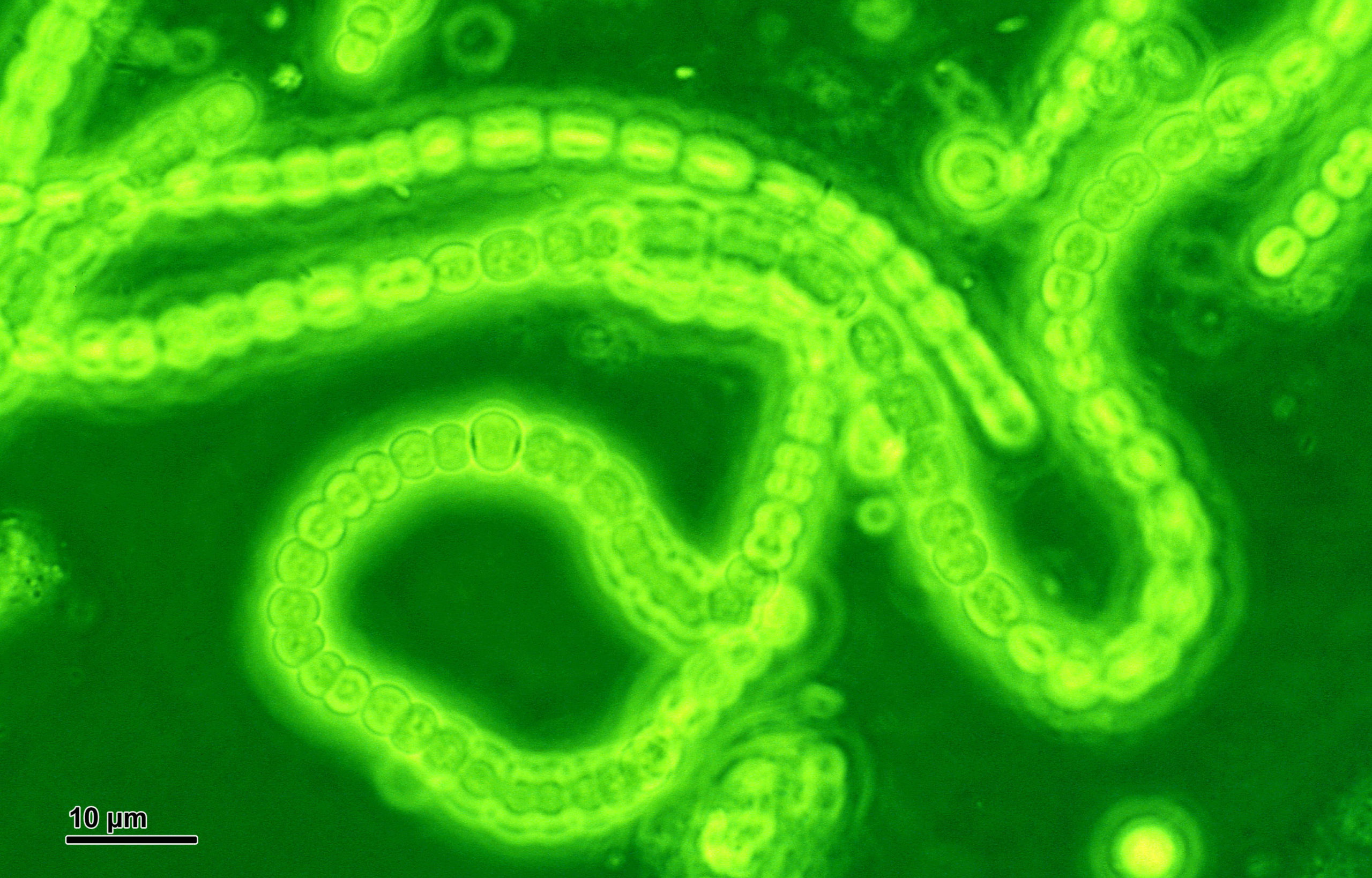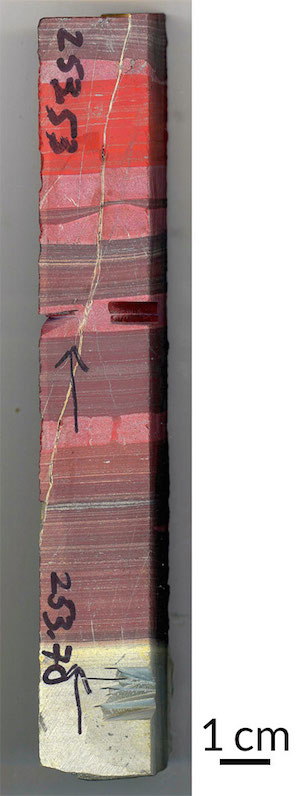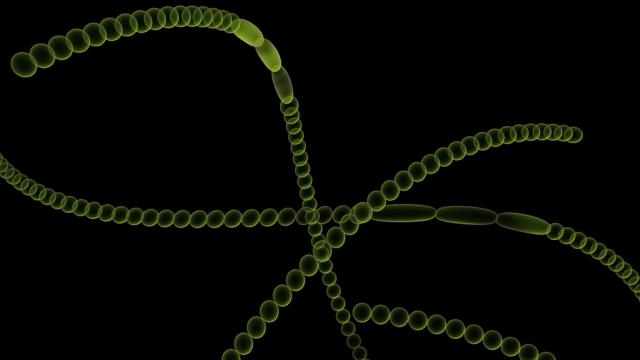If you hopped in the Tardis and travelled back four billion years, you’d find yourself on a hot, miserable wasteland of a planet with nary an oxygen molecule to breathe. Earth used to be an asphyxiating hellscape, but over the eons, tiny green microbes filled the air with oxygen. New research finds they have been at it much longer than we imagined.
In a forthcoming study in Earth and Planetary Science Letters, a team of geochemists reports the discovery of rusty, iron-rich rock layers — a telltale sign of oxygen — in sediments deposited on shallow ocean floors some 3.2 billion years ago. Through chemical analyses, the researchers show that this ancient rust had to have come from biology. That places the appearance of Earth’s first oxygen-producing bacteria some 200 million years earlier than we’d imagined.
Earth’s First Terraformers
Plants get all the credit for keeping our atmosphere breathable, but it was cyanobacteria that kickstarted the effort billions of years ago. These tiny green microbes developed the very first versions of photosynthesis, the process that uses captured sunlight to split water and make sugar. Lucky for animals, photosynthesis releases oxygen as a waste-product.
Around 2.3 billion years ago, the cyanos took off like crazy and started pouring oxygen into the atmosphere. While oxygen-intolerant microbes suffered, the air became much more pleasant for complex, multicellular life. Geologists consider this “Great Oxygenation” event to be a major turning point in the history of life on Earth.

Cyanobacteria. Image Credit: Doc. RNDr. Josef Reischig, CSc. / Wikimedia
But how and when the very first cyanos got going remains a mystery. As you might imagine, it’s rather tricky business to study teensy organisms from long, long ago. Most of their fingerprints have been erased or overwritten by plate tectonics.

Still, geologists are stubborn folks, and they have been systematically hunting down the few very ancient rock formations they can to piece together Earth’s murky past.
A banded iron formation studied holds evidence of oxygen on Earth 3.2 billion years ago, pre-dating earlier estimates of the first occurrence of oxygen by 200 million years. Image Credit: A. Satkoski / University of Wisconsin – Madison
In the new study, geochemist Aaron Satkoski of the University of Wisconson-Madison and his colleagues turned to the Manzimnyama Banded Iron Formation, a 3.2 billion year-old sequence of red and pink-striped rocks that hails from a site in South Africa, just east of Johannesburg. First deposited in ancient seas, these sedimentary rocks get their colour from iron that literally rusted away in the presence of oxygen. By looking at the ratio of two iron isotopes — Fe-56 and Fe-54 — within the rust, the team determined that the shallow sea rocks formed under oxygen concentrations of 0.1%. That may not sound like a lot, but keep in mind most rocks from this time period indicate no oxygen whatsoever. Further evidence for O2 came from a smattering of uranium atoms, which break out of their crystalline form when they react with oxygen.
Of course, this study only identified oxygen in a single spot. The question of whether cyanobacteria were cropping up all over the world at this point remains open. If they were, it’s a bit perplexing why the Great Oxygenation event took another billion years to unfold.
Then again, the early Earth was a pretty unlivable place — bombarded with UV radiation and asteroids alike. Maybe early cyanobacteria were very restricted, clinging on in the few shallow seas that offered just enough sunlight and protection from the elements. If there’s one takeaway here, it’s that Earth’s first terraformers were even more resilient than we imagined — and that we still have a lot to learn about our planet’s deep past.
[Read the full scientific paper at Earth and Planetary Science Letters h/t Science News]
Top image: Artist’s concept of cyanobacteria, via Shutterstock
